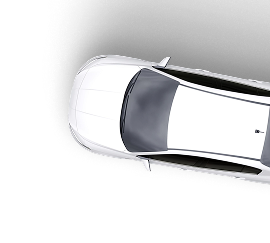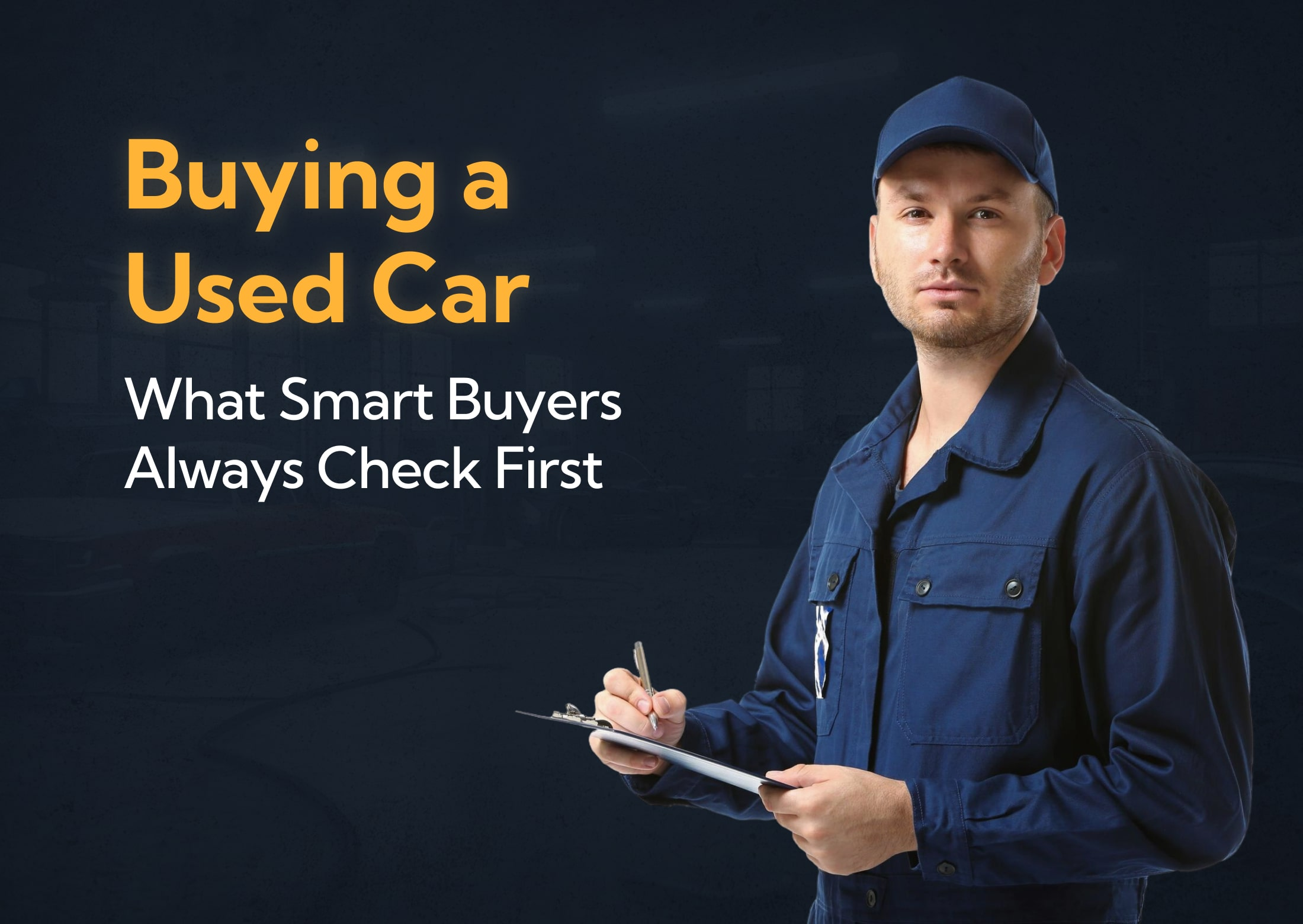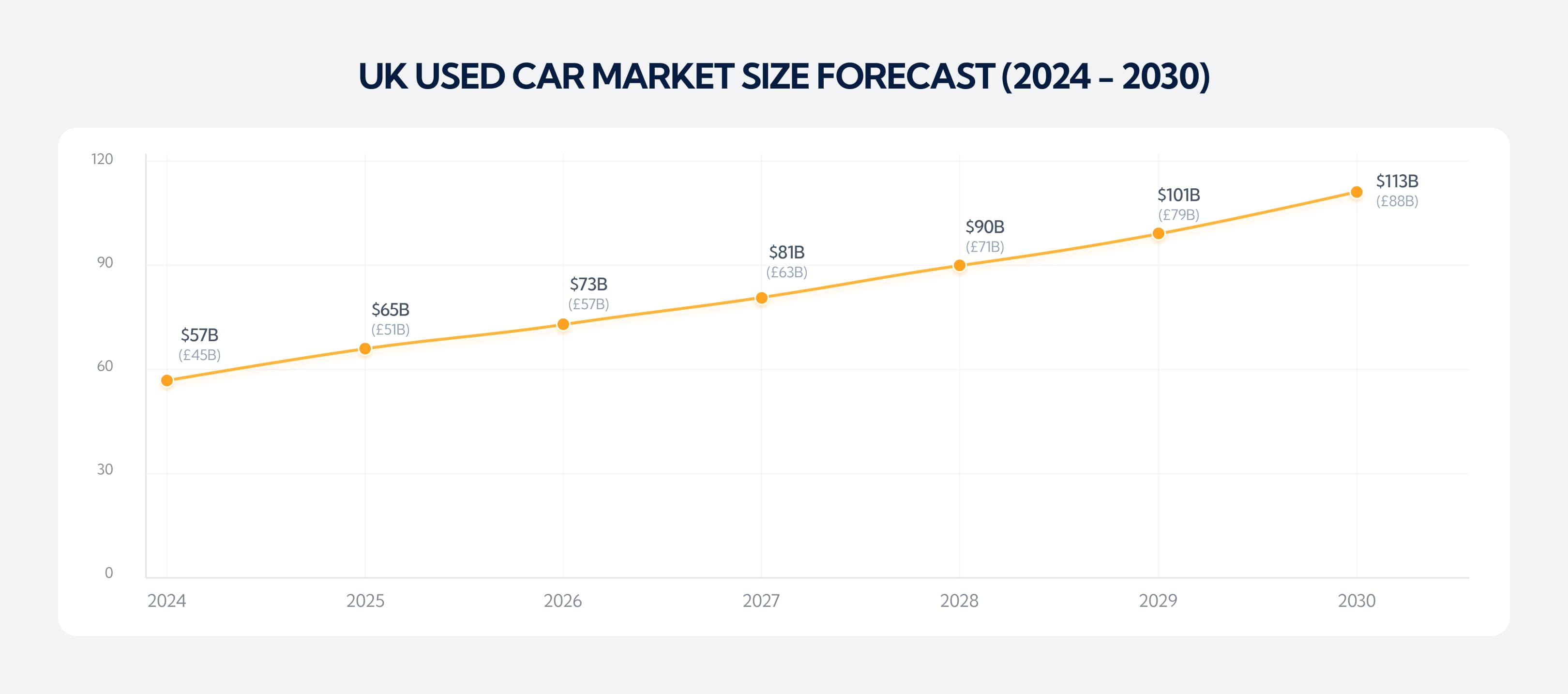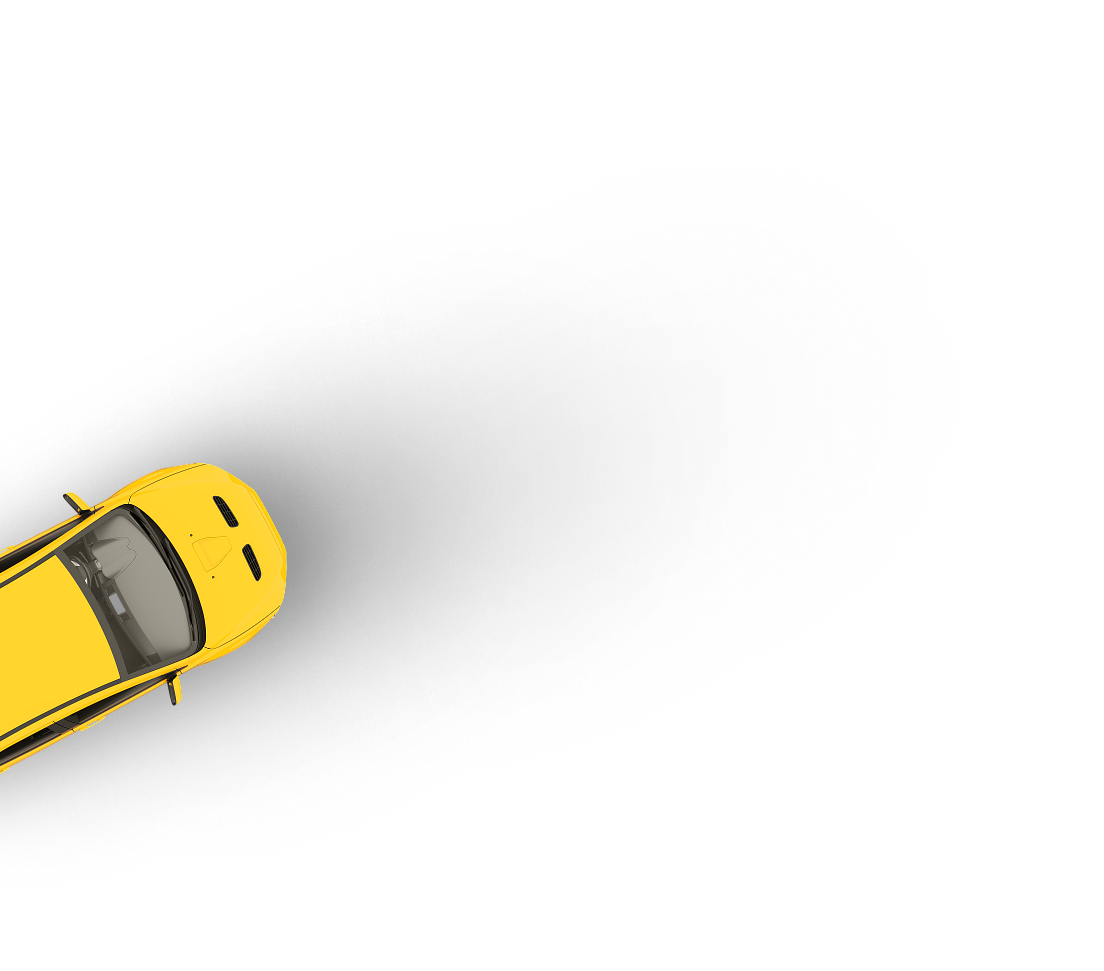Trade to trade car marketplace


Trade-only marketplace
Flexible selling options
Maximise your profits
Buying a used car in the UK? This guide covers everything smart buyers check before handing over their money, from MOT history and service records to test drives, legal checks, and paperwork. That way, you’ll avoid costly mistakes and drive away with confidence.
Last updated: 7th August, 2025

Listen to this story
Buying a used car in the UK can save you thousands of pounds compared to going brand new. Whether you're a first-time buyer or just looking to avoid that dreaded depreciation hit, there are plenty of good reasons to go second-hand.
But we’ll be the first to call out the elephant in the room: there’s risk involved. Faulty brakes, clocked mileage, hidden accident history… these things don’t always show up on the surface. And once you’ve handed over your money, they’re your problem.
That’s why knowing exactly what to look for matters.
In this guide, we’ll walk you through everything you need to check before buying a used car, so you can drive away with peace of mind, not a problem on wheels.
The UK recorded 2.02 million used car transactions in the first quarter of 2025, which marks the ninth consecutive quarter of growth. In 2025, the UK’s used car market will reach USD 64.92 billion, up from USD 57.32 billion in 2024. And from 2025 to 2030, it’s projected to grow at a CAGR of 11.7%.
Compared to brand new cars, the second-hand market remains larger in both value and volume. And it’s got a considerably higher growth rate projected over the next five years.

Bottom line is, buying a used car is a smart move for anyone who wants to avoid the financial sting of new car ownership, while still getting a reliable vehicle that does the job.
Here’s why it makes sense for millions of UK drivers:
This is the obvious one. Used cars cost significantly less than new ones, even if they’re only a couple of years old. You can often get a higher-spec model for the same money you'd spend on a brand-new basic trim.
New cars lose value quickly — up to 50% in the first three years. With a used car, that big initial drop has already happened. You’re getting more stable value for your money and less risk if you decide to sell later on.
Insurance premiums are commonly lower for used cars, especially older models with lower market value. That can make a noticeable difference in your monthly running costs, considering the average insurance premium between January and March 2025 was £418.
The used market gives you access to more brands, models, and features within your price range. Instead of settling for a new car with no extras, you might find a two-year-old version with heated seats, sat nav, and a sunroof, all for less.
If you’re buying a car registered before April 2017, you could benefit from lower Vehicle Excise Duty (VED), depending on the vehicle’s CO₂ emissions. It’s another way to keep long-term ownership costs down.
Extending a car’s life by buying used helps reduce the environmental impact tied to new car production. If sustainability matters to you, this is a solid reason to go pre-owned, so long as you aren’t buying a much older car with bad emissions.
Before you look at tyres, paintwork, or even the engine, start with the car’s past. A clean history tells you a lot more than a shiny bonnet ever could. If there’s anything dodgy lurking in the background (outstanding finance, a major accident, or mileage inconsistencies), you want to know before you hand over a penny.
This one’s quick, free, and incredibly revealing.

Head to the official government MOT checker or use this free online tool at Garage.co.uk and enter the vehicle’s registration number. You’ll get a full breakdown of:
Look for patterns. A car that just scrapes through every MOT with long lists of advisories indicates poor maintenance. On the other hand, a solid pass record with clean advisories is a good sign of a well-looked-after motor.
The V5C logbook is the car’s official vehicle registration certificate. It proves who the registered keeper is (not necessarily the legal owner, but the person responsible for taxing and insuring the car).
Here’s what to check:
Technically, you can buy a car without a V5C. But we advise against it because it’s a sign that the car might be stolen. If the seller says they’ve "lost it" or are "waiting for a new one,” it’s better to wait until they get a new one (which only costs £25 and gets delivered within 5 working days).
Clocking a car (manually rolling back the odometer) isn’t as common as it once was, but it still happens. And even if it hasn’t been tampered with, mileage alone won’t tell you everything. You need to verify it across multiple records.
Here’s how to check it properly:
If the mileage seems low for the age of the car but there’s no paperwork to back it up, it’s not a guarantee that something’s wrong, but it’s worth investigating further.
A full history check is one of the smartest things you can do before buying a used car. It gives you the full picture, far beyond what the seller or free online check might be telling you.
You can use services like HPI Check, carVertical, or the AA’s vehicle history tool. They typically cost £10 to £20, and it’s money well spent.
Here’s what a proper check will reveal:


A proper in-person inspection is about surfacing signs of neglect, hidden damage, and expensive repairs waiting to happen. Whether you’re buying from a dealership or a private seller, take your time.
Start by walking around the entire car in good daylight. You’re checking for damage, inconsistency, and signs of a rushed repair.
Look out for:
| Exterior Condition Checklist | |
|---|---|
Paintwork | Look for mismatched colours; may indicate replaced panels after an accident. |
| Scratches and dents | Minor scratches are fine, but deep dents may signal past damage or poor treatment. |
| Rust | Focus on wheel arches, door sills, and boot edges. Surface rust is cosmetic; bubbling is serious. |
| Panel gaps | Uneven gaps between panels can point to crash repairs or frame misalignment. |
| Windscreen | Check for chips and cracks, especially around the edges (can lead to MOT failure). |
| Headlights and taillights | Make sure there are no cracks, misting, or broken mounts; replacements can be costly. |
| Tyre condition | All tyres should have at least 1.6mm tread (check with a 20p coin). Uneven wear may suggest suspension or tracking issues. |
| Tyre brand and age | Mismatched tyres or very old rubber (over 6 years) might indicate poor maintenance. |
| Number Plates | Ensure they’re securely attached and not cracked; legibility issues can result in fines. |
You don’t need to be a mechanic, but a quick look under the bonnet can tell you a lot. It speaks to potential performance issues and maintenance neglect that could ruin the car.
These repairs are some of the most expensive to make later on, so missing them means you might spend just as much as (or more than) you would have if you’d just bought a car new.
Look for the following:
| Under-the-Bonnet Condition Checklist | |
|---|---|
Fluid levels | Oil, coolant, and brake fluid should all be at the right levels. Low fluids can indicate neglect. |
| Oil condition | Pull the dipstick. Oil should be golden or brown, not black and sludgy. |
| Leaks | Look for any wet or greasy patches around the engine block, radiator, or under the car itself. |
| Battery | Check the age (usually labelled) and look for signs of corrosion on the terminals. |
| Belts and hoses | These shouldn’t be cracked or frayed. Worn parts mean maintenance has been skipped. |
The inside of the car should match the mileage and the seller’s story. You wouldn’t expect a low-mileage car to have a beaten-up interior. You also don’t want to pay a premium for a car with cigarette burns or broken electronics.
Inspect for the following issues:
| Interior Condition Checklist | |
|---|---|
| Seats and upholstery | Excessive wear, rips, or cigarette burns can be a dealbreaker, especially on low-mileage cars |
| Dashboard lights | Turn the ignition on and check that all warning lights come on briefly, then go off. If any stay on, there may be a fault. |
| Electronics | Test every switch: windows, mirrors, air con, heater, stereo, and infotainment. If something doesn’t work, ask why. |
| Component functionality | The gas, brake and clutch should work properly with the gear stick, as should the gear stick and steering wheel. |
| Odometer and wear patterns | Worn pedals, gear stick, or steering wheel on a “low mileage” car? Might be too good to be true. |
If you can safely get low enough or ask the seller to put it on a ramp, looking underneath the car will reveal leaks, rust, and loose components. If there’s a serious mechanical or structural issue, you won’t see it anywhere else, and those are expensive to fix.
Pay attention to:
| Under-the-Car Condition Checklist | |
|---|---|
| Fluid leaks | Look for oil, coolant, or brake fluid dripping onto the ground or crossmembers (signals engine or brake issues). |
| Rust on the chassis | Surface rust is normal, but flaking, holes, or heavy corrosion on structural parts can be dangerous and fail MOT. |
| Exhaust System | Check for sagging, holes, or heavy rust. A damaged exhaust can be noisy, inefficient, or fail emissions tests. |
| Suspension components | Look for broken springs, leaking shock absorbers, or loose mounts; these affect ride quality and safety. |
| Brake lines | Corroded or damaged brake lines are a serious hazard; repairs can be expensive and urgent. |
| Tyre sidewalls (inner edge) | Run your hand along the inner edges of the tyres; bulges, cracks, or wear here are easy to miss but dangerous. |
| Undertray/damage shields | Make sure undertrays are secure and not dragging or missing; missing parts will expose other critical components to debris. |
After a physical inspection, a proper test drive is your chance to catch problems in motion. Strange noises, stiff steering, or sluggish performance won’t show up until the car is turned on and moving. Listen carefully, feel everything, and don’t rush.
Starting a car from cold is one of the best ways to detect hidden engine or battery problems. A warm engine can mask starting issues, strange noises, or excessive smoke. Sellers sometimes run the car before you arrive, so don’t let them.
Pay attention here to warning lights that stay on the dashboard after ignition.
Brakes are your first line of safety. If they’re weak, unbalanced, or noisy, you're not just looking at a repair bill, you’re looking at a serious risk to yourself and others. Test them properly during your drive, not just at low speeds.
Start by building up to 30–40 mph on a quiet, straight road. Apply the brakes firmly but smoothly. There’s no need to slam, but don’t be gentle either.
Pay attention to how the car behaves:
Check the brake pedal feel; it should be responsive, not spongy or overly stiff.
Worn steering or suspension components make the car feel unstable and potentially unsafe at speed. You’ll also feel every bump and pothole a whole lot more. A solid suspension setup should feel planted and responsive, and it should feel stable around corners.
Once you start moving:
Ideally, you should also drive on a mix of road surfaces that includes some uneven or slightly bumpy roads.
Gearbox and clutch problems make driving miserable and, like other major problems, potentially cause MOT failures and are expensive to fix. A good gearbox should shift smoothly, and the clutch should engage cleanly without weird noises or resistance.
With the engine running, press the clutch pedal. It shouldn’t feel stiff, spongy, or noisy.
Then, when you put the car in first gear, it should engage easily with no crunching or resistance. During the drive, go through all the gears, listening and feeling for shifting without grinding or sticking and difficulty getting into reverse or the next gear
When pulling away, see where the clutch “bites”. This is where you’ll feel the feedback from the pedal and there’ll be slight vibrations through the pedal. A high biting point may mean the clutch is worn and near the end of its life.
Try a hill start if possible. If the clutch slips (revs rise but speed doesn’t), you’re looking at an imminent clutch replacement.
You could inspect a used car to perfection, but if the legal side isn’t right, none of that matters. These checks protect you from fraud, theft, and unexpected financial headaches after the sale. Miss them, and you could lose both the car and your money.
Award-winning automotive entrepreneur, tech innovator, and founder of NewReg.co.uk, Car.co.uk, and Recycling Lives.
We see far too many buyers come to us after getting burned on a private sale because they skipped a £10 history check or didn’t verify the seller’s ID. The truth is, due diligence takes 30 minutes, but fixing a bad purchase can take months. Ask questions, check documents and definitely don’t rush.
This one’s simple, but crucial because it’s where a lot of car-buying scams start.
Ask to see photo ID (like a driving licence) and check it against the name and address on the V5C logbook. If the seller refuses to show ID, then won’t let you view the car at their address or claims to be “selling it for a mate”, it’s better to walk away. It could be stolen or cloned.
Cars bought on finance (like PCP or HP) don’t legally belong to the driver until the final payment is made. That means that if you buy a car with active finance, you risk losing it because the finance company still owns it.
Figuring this out is simple. Just use a paid vehicle history check (like HPI or CarVertical) to see if there’s finance outstanding.
Written-off cars are ones that insurers have decided aren’t worth the cost of repair. You won’t find a Cat A or B car for sale, but other write-off categories will still make it back onto the road legally.
Here’s what the categories mean in the UK:
We’re not saying you have to interrogate the owner of the vehicle. But the way a seller answers your questions can reveal just as much as the condition of the car itself.
Be polite, but firm when you ask the following questions:
This is a classic for a reason. You’re not just listening to what they say, but how they say it. Genuine sellers often have a clear reason: upgrading, downgrading, moving abroad, or they no longer need it. Vague or overly rehearsed answers might mean they’re hiding a problem.
A seller who’s only had the car for a few weeks should raise eyebrows. Are they flipping it? Trying to offload something with hidden issues? A longer ownership period usually means they know the car well and are more likely to be honest about its history.
If they say “I think it’s around somewhere” or “It’s all online”, push for details. A car with no service records is a gamble. You want to see receipts or a stamped service book showing regular maintenance. It’s one of the clearest signs of how well the car’s been looked after.
Ask this directly and watch the reaction to see if the seller hesitates or avoids eye contact. Even minor crashes should be disclosed. And if they say “not that I know of”, take that as a cue to double-check with a vehicle history report.
You've done the inspection, asked the right questions, and you're ready to buy, but you’re not out of the woods just yet. The final step is where lots of buyers slip up. To protect yourself legally and financially, you need to handle the paperwork and payment properly.
The V5C logbook must be updated to reflect the change of ownership. The seller is responsible for this.
They must:

Alternatively, both of you can complete the transfer online via the GOV.UK sold/transferred/bought vehicle service. This is faster and you’ll usually get confirmation by email within minutes.
When you’re buying a used car, bank transfer is the safest and most traceable option. You’ll have a digital record of the payment, and most UK banks offer instant transfers.
Cash can work, but only if you're confident the seller is legit. Count it in front of them, get a receipt, and ideally bring a witness. It’s not a good idea to carry large amounts of cash to a private address alone.
Always get a written receipt signed by both parties. It should include:
Even a simple handwritten document will do. This protects both sides and could save you serious headaches later.
Buying a used car in the UK is one of the smartest financial moves you can make, but only if you do it right. Don’t let a shiny exterior or a pushy seller rush your decision. A proper inspection, a verified history, and clean paperwork are non-negotiables to being a well-informed buyer.
Take your time. Ask direct questions. Trust the data, not the sales pitch. And remember: if something feels off, it probably is.
Yes. Generally speaking, buying from a dealer is safer than buying privately. Dealers are legally required to ensure the car is roadworthy, as described, and fit for purpose. You also have more consumer protection under the Consumer Rights Act.
Private sellers don’t offer these guarantees (though they are bound by UK law to make certain disclosures), so buying privately carries more risk along with potential savings.
At minimum, you should get the V5C logbook (with the “new keeper” slip), any available service history, and a receipt showing buyer and seller details, and any available service history. You don’t need the car’s MOT certificate because it’s available online.
From a dealer, yes. You may have up to 14 days if you bought the vehicle online or over the phone (distance selling rules), or 30 days if the car is faulty under the Consumer Rights Act.
From a private seller, no. Unless the car was severely misrepresented or sold illegally, the sale is usually final. You don’t have the right to return it simply because you’ve had a change of heart or found something faulty after purchase.
Absolutely. It’s illegal to drive on public roads without valid insurance, even if it’s just a short trip home. Arrange cover before you collect the car. Some insurers even offer temporary cover if you’re still shopping around for a long-term policy.
From a dealer, you’ll often get a 3-6 month warranty included with your purchase. Some offer longer warranties or sell extended cover.
From a private sale, you’re unlikely to get any warranty at all, so check everything thoroughly before you buy.

